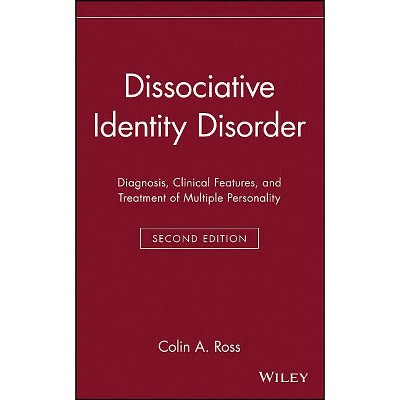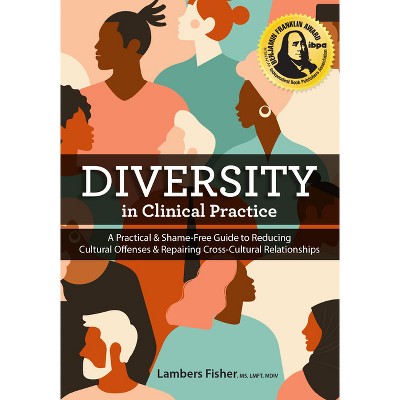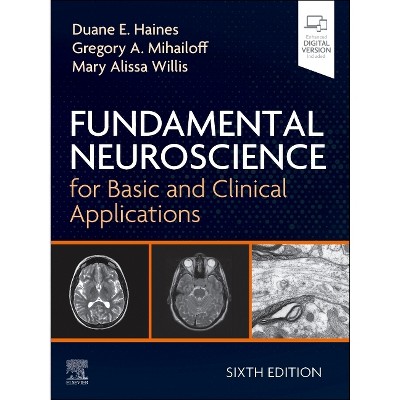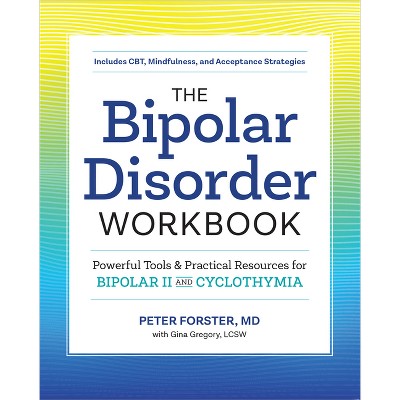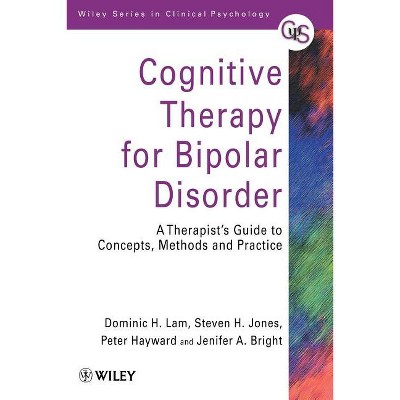An Introductory Clinical Guide to Dissociative Identity Disorder - by Gregory Nooney (Paperback)

About this item
Highlights
- If you are skilled in working with complex trauma, you can effectively treat DID.Media portrayals of dissociative identity disorder (DID), formerly known as multiple personality disorder, are often misleading and sensationalized at best, or harmful and inaccurate at worst.
- About the Author: Gregory L. Nooney, MSW, ACSW, LISW, LCSW, earned a master's degree in social work from Loyola University in Chicago in 1983 and is licensed in Iowa (LISW) and Hawaii (LCSW).
- 168 Pages
- Psychology, Mental Health
Description
About the Book
If you are skilled in working with complex trauma, you can effectively treat DID. Media portrayals of dissociative identity disorder (DID), formerly known as multiple personality disorder, are often misleading and sensationalized at best, or harmful and inaccurate at worst. As a result, outdated myths about the disorder persist, including the belief that it is rare, scary, or not a "real" condition. With so much stigma and disinformation floating around, clinicians often feel ill-equipped to treat DID, or are skeptical of it altogether, leaving clients without the therapeutic support they need. This book offers a solution to that problem. Based on Greg Nooney's 30-plus years of working with DID, this introductory how-to guide provides you with foundational, yet easy-to-follow, best practices for identifying and working with multiplicity. With the various case vignettes, sample dialogues, and concrete tools inside, you'll learn how to: - Recognize identity fragmentation when it shows up in session - Get to know each alter and their role in the client's internal system - Use effective resourcing techniques to quiet dysregulation among alters - Facilitate communication and cooperation between alters - Dissolve dissociative barriers slowly and safely - Process trauma memories that underlie dissociation As a therapist, you will never be able to directly experience the inner world of a client with DID, but you can help them navigate that world with greater flexibility and ease.Book Synopsis
If you are skilled in working with complex trauma, you can effectively treat DID.
Media portrayals of dissociative identity disorder (DID), formerly known as multiple personality disorder, are often misleading and sensationalized at best, or harmful and inaccurate at worst. As a result, outdated myths about the disorder persist, including the belief that it is rare, scary, or not a "real" condition. With so much stigma and disinformation floating around, clinicians often feel ill-equipped to treat DID, or are skeptical of it altogether, leaving clients without the therapeutic support they need.
This book offers a solution. Based on Greg Nooney's 30-plus years of working with DID, this introductory how-to guide provides you with foundational yet easy-to-follow best practices for identifying and working with multiplicity. With the various case vignettes, sample dialogues, and concrete tools inside, you'll learn how to:
- Recognize identity fragmentation when it shows up in session
- Get to know each alter and their role in the client's internal system
- Use effective resourcing techniques to quiet dysregulation among alters
- Facilitate communication and cooperation between alters
- Dissolve dissociative barriers slowly and safely
- Process trauma memories that underlie dissociation
As a therapist, you will never be able to directly experience the inner world of a client with DID, but you can help them navigate that world with greater flexibility and ease.
Review Quotes
"Greg Nooney is a true ally to people with dissociative identities, and this book shows that Greg has done the most important study of all in developing his clinical DID specialty--listening to his clients and to those with lived experience. An Introductory Clinical Guide to Dissociative Identity Disorder is an excellent resource for therapists who are new to working with dissociative identities and for those who need guided structure to assist their clinical conceptualization. While every client or system with dissociative identities is unique, and bringing concepts together into a single manual or resource is next to impossible, Greg does the closest thing possible with great competence in this book. His 'Best Practices' structured infographic sets a great tone for the material that he offers in the book, and the voice that comes through shows his wisdom and experience."
--Jamie Marich, Ph.D., LPCC-S, REAT, Founder and CEO of The Institute for Creative Mindfulness author of Dissociation Made Simple: A Stigma-Free Guide to Embracing Your Dissociative Mind and Navigating Daily Life and Trauma and the 12 Steps: An Inclusive Guide for Recovery Enhancement
"In this brief, engaging, and very clearly written book, Greg Nooney shares the knowledge he has gained through years and years of direct experience in working with people who experience themselves as multiple, separate, identities--people who have developed dissociation as a survival skill in the face of circumstances that have threatened their very existence. It is not easy to write a 'how-to' book that avoids rigid recipes while still being useful in its guidance, but Nooney has done it. He keeps the people seeking help--their values, their specific circumstances, their longings, and their struggles--at the center, while offering useful advice for what to expect, what to avoid, and how to create an accepting, safe-enough, and hopeful space for healing."
--Gene Combs, co-director of Evanston Family Therapy Center, and author of Narrative Therapy: the Social Construction of Preferred Realities
About the Author
Gregory L. Nooney, MSW, ACSW, LISW, LCSW, earned a master's degree in social work from Loyola University in Chicago in 1983 and is licensed in Iowa (LISW) and Hawaii (LCSW). He is the author of Diagnosing and Treating Dissociative Identity Disorder: A Guide for Social Workers and All Frontline Staff, published in 2022 by NASW Press, and an article entitled "Dissociative Identity Disorder" in the Encyclopedia of Social Work. Greg has worked as a therapist, mostly in community mental health centers, for 40 years, and was the director of a mental health clinic from 2007 to 2017. Now semi-retired, he sees a few clients, does supervision, and offers consultation for other therapists who are working with clients with DID. Greg is currently in the process of writing a novel with a main character who has DID. He and his wife have four adult children and live in Iowa in a small house with two cats and a vegetable garden. Greg is passionate in his desire to educate other therapists to accept and work cooperatively with those who are diagnosed with OSDD or DID. He can be reached through his website at www.gregnooney.com.
Shipping details
Return details
Trending Diet, Health & Fitness Books






